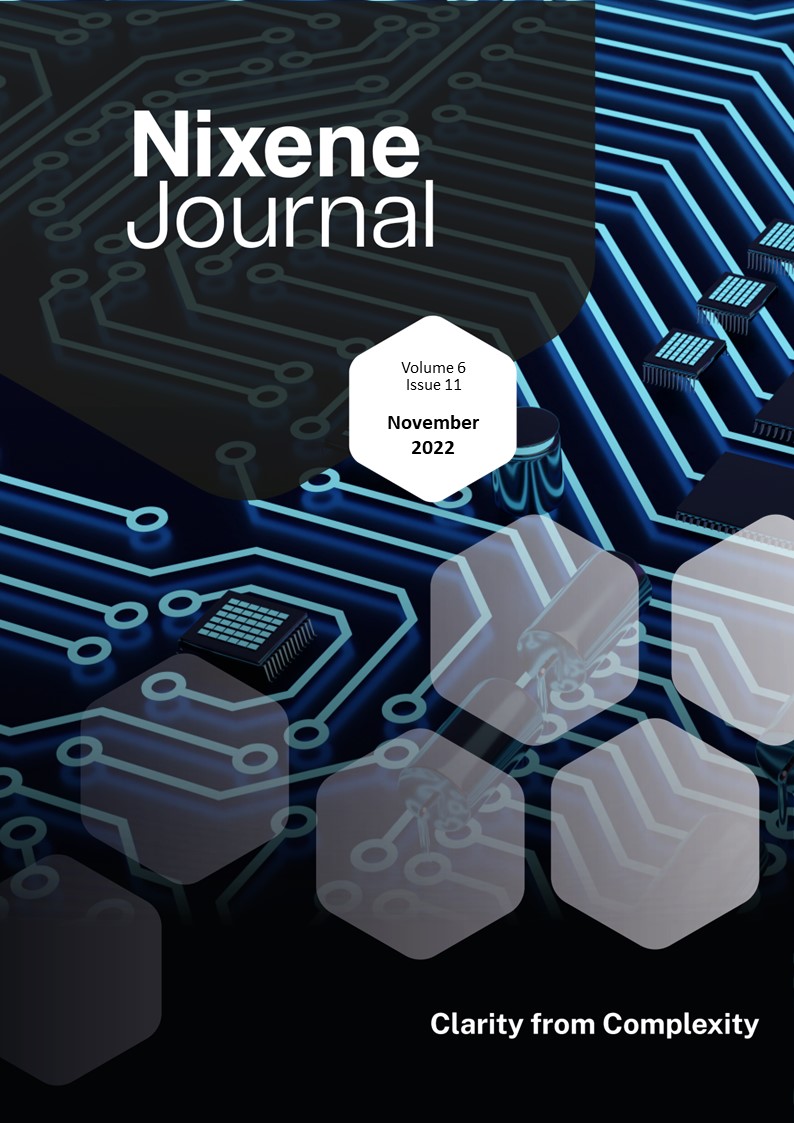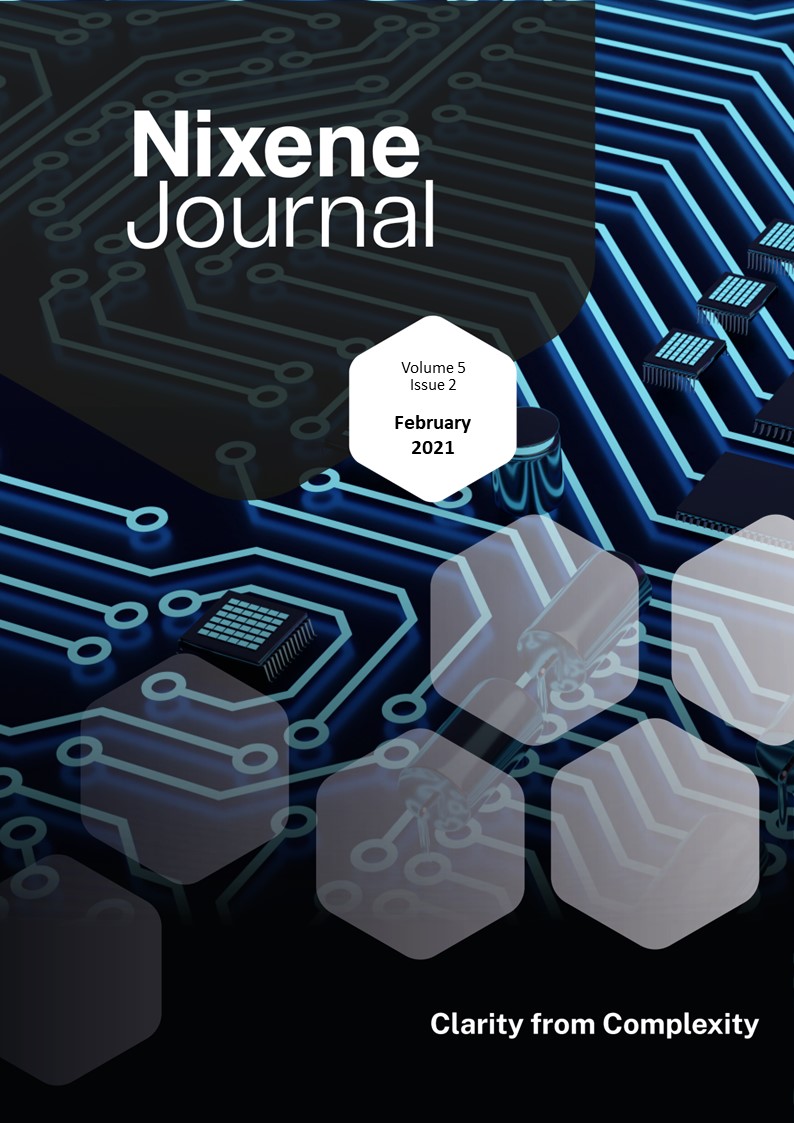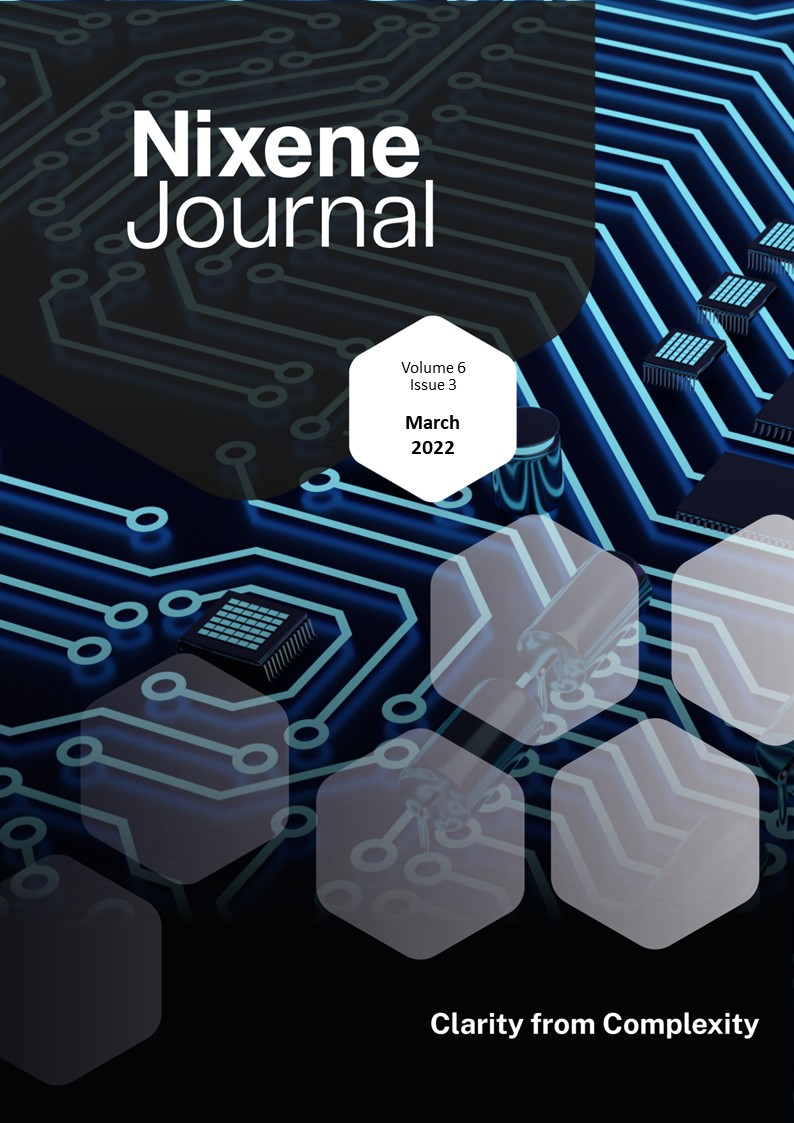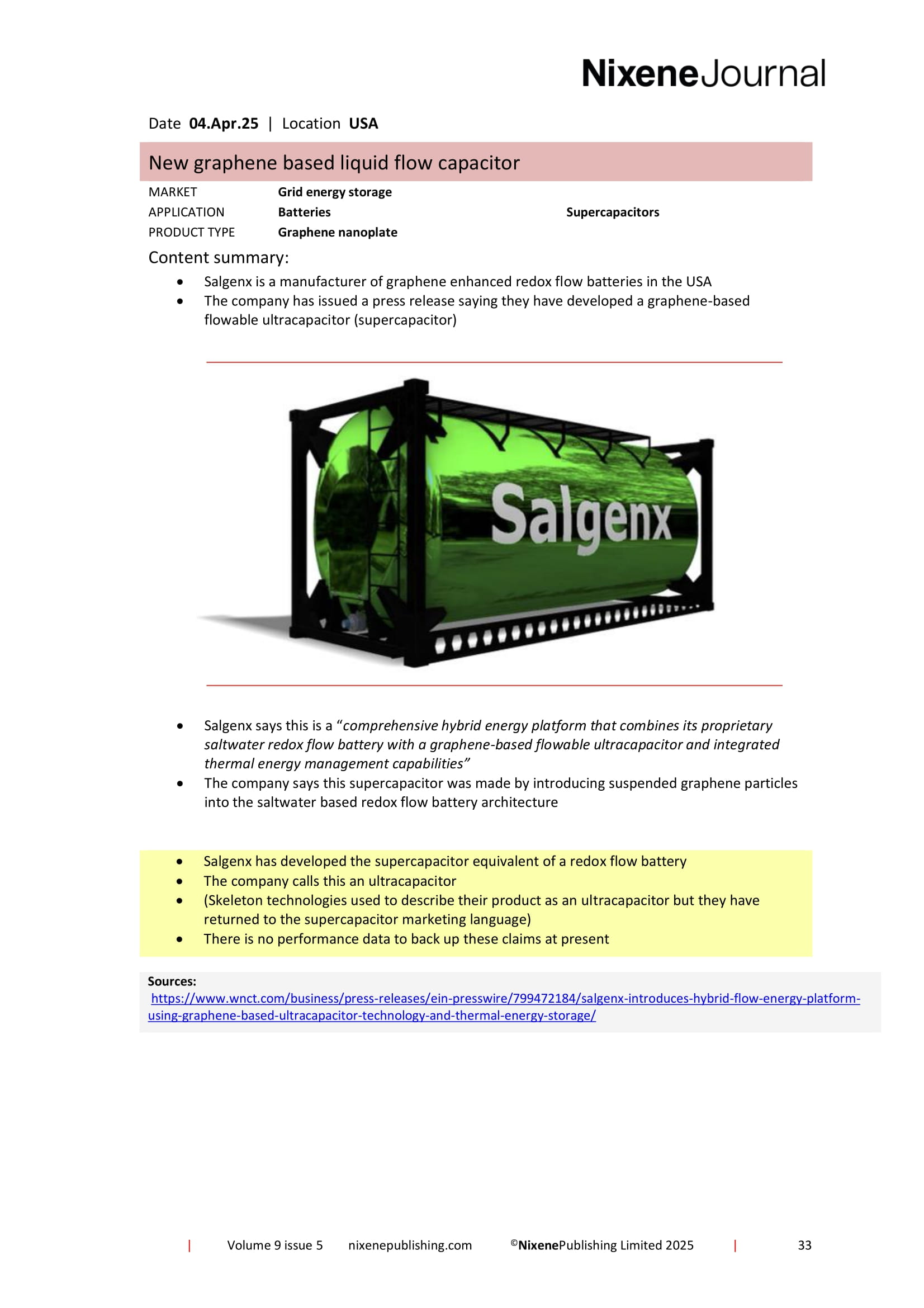Journals
This product is relevant to the following:
Material:
Other:
, ,Locations:
Markets:
Applications:
Product Types:
Technologies:
Related products
-

Vol 5 Issue 8
I have learned that news headlines which end with a question mark are nearly always less interesting than those that do not. A case in point: An article was posted at the start of the month asking “Has the funding for graphene dried up?” (p.48). On the same day, Estonian graphene supercapacitor manufacturer Skeleton announced it has secured over €120million in funding over the past 12 months (p.49). This probably makes Skeleton the most commercially successful application for graphene so far. Other companies prefer to avoid the limelight and operate in secret until they are ready to come out into the open. Sometimes their public disclosure is deliberate. Charmgraphene announced this month they are in the roll-to-roll graphene manufacturing business and can make graphene at speeds of 2m per minute and lengths up to 1km (p.36). Sometimes the disclosure is accidental, as might be the case with an academic paper being published by one of the researchers working with graphene photonics company CamGraPhIC (p.21 and p.33). We don’t need to be as concerned with secrecy, quite the reverse. Our purpose is to inform you of the activity we are monitoring in this fast-moving field, special features are part of the way we do this. This issue is the first time Debbie, Rob and I have all written special features in one edition. Debbie has been interviewing Graphene Star. They have developed a very high solids content (25% solids) graphene dispersion that is water based and appears to be very stable. The company has been creating novel coatings with a traditional paint company in the UK. The combination of the old and new seems to be working well for both companies. My contribution is a look at the state of the art of industrial CVD graphene manufacturing. If you ever wondered what the ‘Market, Application and Product Type’ keywords tables are for, then Rob’s special feature will give you part of the answer. We are creating a structured keyword database that builds with each journal issue. This is primary data; you will not find this anywhere else. Rob has been analysing the instances of our keywords over time to explore the market application trends for graphene products since 2017. The results are revealing and show where the global applications development has been and will be for the near future. And, in case you were wondering, yes, Rob’s analysis does include supercapacitors. This appears in the top ten of applications. Dear Reader, we have done more sorting of the signal from the noise, as usual there is so much more to read in this issue. Adrian Nixon, 1st August 2021£45.00 View product -

Vol 6 Issue 11
This month we performed our own analysis of the world-wide graphene research trends between 2004 and 2021. This examined the number of research papers produced by the academic community each year. We found that ‘peak graphene research’ occurred in 2018 with a maximum of over 300,000 scholarly articles produced in one year. That number has declined by about a third in the years leading up to 2021 and there are now around 100,000 articles produced by the global academic community each year. The trend charts in the special feature of this issue reveal what we found in more detail. It makes for fascinating reading and will give you an insight into how we curate each issue of this journal. The research we have highlighted this month includes work done by a team at Chongqing University, China who have discovered a way of improving the efficiency of the chemical vapour deposition (CVD) process for making graphene. By using a special catalyst, they can lower the furnace temperatures by 300°C. Other work by researchers at the University of Manchester, UK has found a potentially efficient way of splitting water into hydrogen gas using proton permeable graphene membranes. They can also measure the proton current moving across the graphene membrane. Understanding proton currents could help design better hydrogen fuel cells and even help design better ways of generating fuel for a future hydrogen economy. There are interesting developments on the industrial and commercial side this month. In Australia, the Graphene Manufacturing Group has done something with battery technology that we rarely see. They have made big improvements in energy density. This is a very hard thing to do with lithium-ion batteries. GMG has developed a new technology; graphene-aluminium-ion batteries and they are making continuous improvements, we are impressed. Another new technology caught our attention. First Graphene is helping develop a prototype module that can be retrofitted to natural gas boilers. The technology is graphene enabled, improves the efficiency by 20 to 30% and at the same time achieves 98-99% reduction in boiler emissions. This is at the prototype stage now. We wish the company well developing this technology. As usual dear reader, this is just the tip of the mountain, please explore the landscape we have curated for you this month by reading on… Adrian Nixon 1st November 2022£45.00 View product -

Vol 5 Issue 2
Regular readers will be aware of my view that the field of graphene is moving faster than anyone realises. More evidence supporting this emerged this month. A team at Penn State university in the USA has been working on experiments with passing sound waves through sheets of graphene with precise holes drilled in hexagonal patterns. They made the acoustic analogue of twisted bilayer graphene and found the acoustic equivalent of the magic angle. So, as well as twistronics for electrons we now have phononics for sound waves in twisted bilayer graphene, and probably other 2D materials. A new field of scientific study made possible by graphene the progress really is astonishing. The US Government is starting to wake up to the power of graphene. James Tour’s flash graphene is attracting the attention. The team now can take the waste char from plastic recycling and turn it in to graphene that improves the strength of cement by 30%. Rice University says the Air Force Office of Scientific Research and the Department of Energy supported the research. Trade magazines in the construction sector are also picking up on this. Another development by James Tour; Laser induced graphene is being used to make biosensors that detect and diagnose SARS-CoV-2 in blood and saliva samples. The test links to a smartphone and produces results in ten minutes. More work is being done with graphene supercapacitors. It looks like increasing the surface area of graphene nanoplates by increasing the separation between the nanoplates increases the energy density. Cross linking the nanoplates with a big molecule that is also electrically conductive improves the supercapacitor performance still further. Computer graphics card manufacturer, Gigabyte, has launched a new high end gaming card. Graphene is being used to improve the cooling performance, interestingly not using the thermal properties, but using graphene as a lubricant. Investors seem to be taking a more active interest in graphene companies. Ionic, the Australian supercapacitor manufacturer has received $2million to develop its manufacturing operation. In the UK Versarien has raised another £3.5million and Applied Graphene Materials has raised £6million in cash by selling more shares. This gives both companies some financial breathing room but also raises the pressure to deliver revenue growth. And there is lots more of interest in this packed issue. Adrian Nixon, 1st February 2021£45.00 View product -

Vol 6 Issue 3
This month Rob and I gained first-hand experience of the benefits of adding graphene to enhance concrete. We were given a tour of the new Mayfield development in Manchester, UK. The site is still under construction, and parts of it are now open to the public. One of these areas is the new mezzanine floor area directly underneath the old Mayfield rail station. We were standing on what seemed to be an unremarkable concrete floor. It becomes remarkable when you know what to look for. We were lucky to have one of the joint MDs Alex McDermott as our guide. The whole floor was constructed and finished in a fraction of the time it would normally take. Also, the floor is flawless, with no expansion joints or cracking. There is also no sign of shrinkage. We knew graphene-enhanced concrete was strong. Now we know there are other benefits emerging. Graphene is the gift that keeps giving. Graphene-enhanced concrete is being trialled in other parts of the world too. In New Zealand, First Graphene has partnered with a particularly active distributor and trial pours are already underway. In the USA, Debbie discovered that the US Army ERDC also has an active interest in graphene enhanced concrete. They are discovering the same strength and fast cure benefits that graphene confers to the finished construction. You can find out more in her special feature. Battery technology continues to be developed. First Graphene and Zentek have both turned their attention to silicon anodes. Silicon is an attractive material to make Li-ion battery electrodes. The problem is it expands by up to 300% when lithium migrates into the crystal structure during charging. Using silicon particles coated with graphene nanoplates seems to mitigate this problem. Transition metal dichalcogenides (TMDs) are another two-dimensional (2D) material. Akanksha Urade wrote a good overview of the technology this month, and separately the Graphene Flagship published an overview of their interest in these materials. They have been working on using TMDs as next generation heat pumps. They can be used in heating and cooling applications and also as thermoelectric generators. This work is still at the early stage, however there are well funded teams working in this research area so we can expect to see meaningful progress in the future. Chemical vapour deposition (CVD) graphene used to be talked about in terms of just a research project. Now we know industrial processes can make graphene films by the kilometre and at high speeds. The development of the technology has matured from academia to industrial R&D. One of the companies in Korea, Charmgraphene has now developed graphene separation and transfer technology to the point where they can make freestanding graphene films at square centimetre scale and in thicknesses ranging from three to ten atomic layers thick. You can read about more of the astonishing progress being made in this field by reading this packed issue. Adrian Nixon, 1st March 2022£45.00 View product



